Early morning in the gentle hills of Tuscany: Thomas, pickaxe in hand, methodically digs into the earth to uncover a wealth of marble and semi-precious stones. These will be transformed into pieces of furniture or artworks that will be treasured for generations to come. This is where every shard of Thomas’s pietra dura begins.
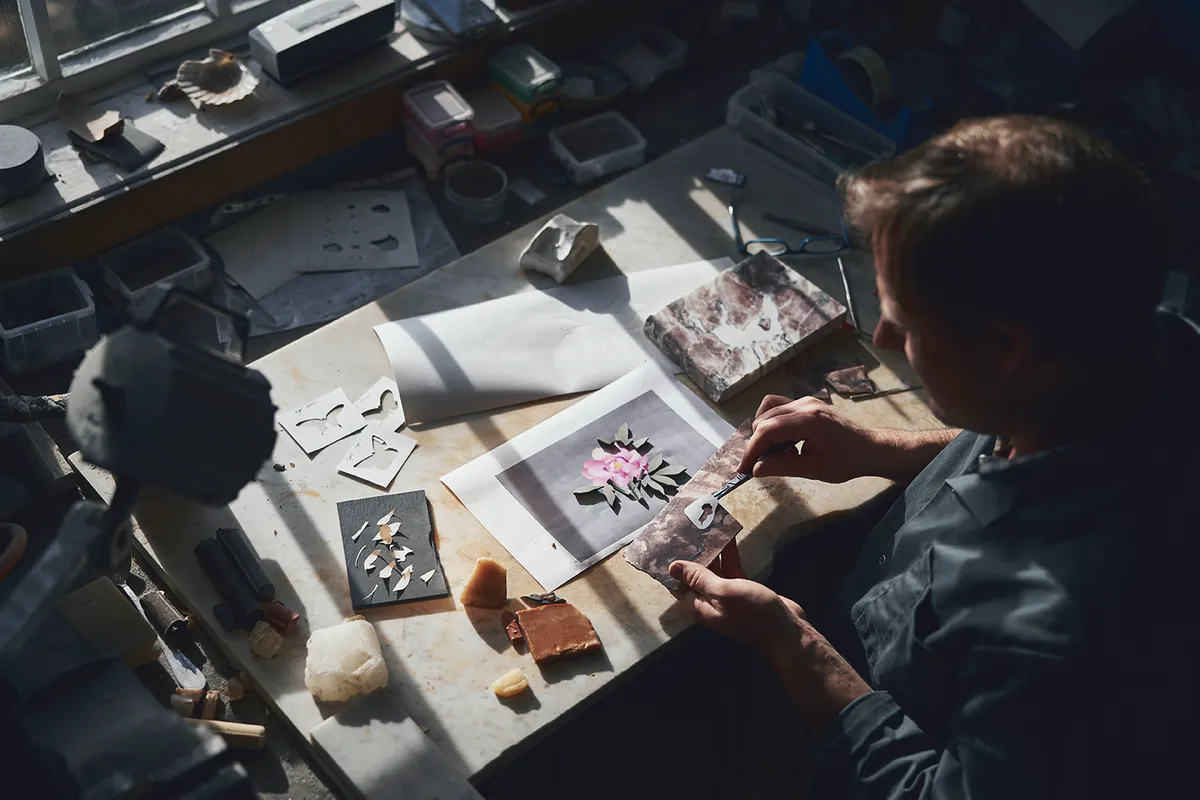
Thomas brings home his geological finds to rural Northamptonshire, where he creates his ‘paintings in stone’ in his converted Edwardian outbuilding. But his journey to becoming a master craftsperson began in Scotland, at the renowned Chippendale International School of Furniture. It was here that he discovered his love of marquetry work. Thomas worked hard to master this ornate craft, but little did he know how this would stand him in good stead for a calling he was yet to discover.
These stones will be transformed into pieces of furniture or artworks that will be treasured for generations to come.
Flourishing in Florence
It was while he was studying art history in Italy that Thomas fell in love with marquetry in stone. Pietra dura has an expansive history and dates back as far as the Ancient Romans. However, it wasn’t until the 16th century that this art form blossomed in the Italian cultural epicentre, Florence. It’s no wonder that this is where Thomas was introduced to, and later mastered, the intricate craft of pietra dura. ‘I had four wonderful years in Italy learning the art form in a family workshop,’ he tells us.
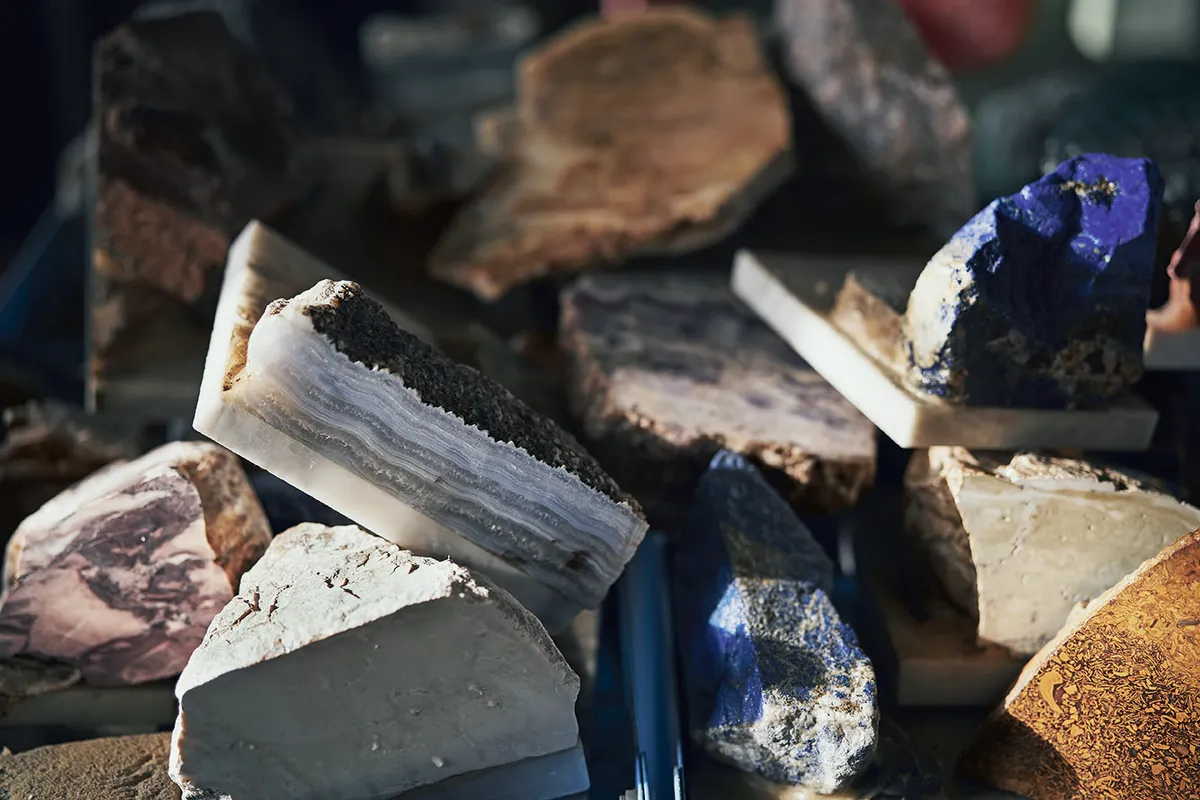
During a trip to the Opificio delle Pietre Dure museum, Thomas’s fascination with this exquisite craft was sown. ‘It houses some magnificent mosaics that I felt could be mistaken for paintings,’ he says. Thomas was amazed that he seemed to be the only one drawn to this mesmerising collection. ‘Everyone was piling into the Accademia and, literally just a street away, there’s this other museum that’s very quiet and hidden away – it’s an incredible place.’
After his life-changing experience in Italy, an inspired Thomas returned to the UK to establish his own pietra dura business. He is now a highly skilled specialist and one of the very few craftsmen in the UK to have been traditionally trained in the age-old Italian technique. As a testament to his skill, Thomas was asked to create a pietra dura coat of arms for Richard III’s tomb.
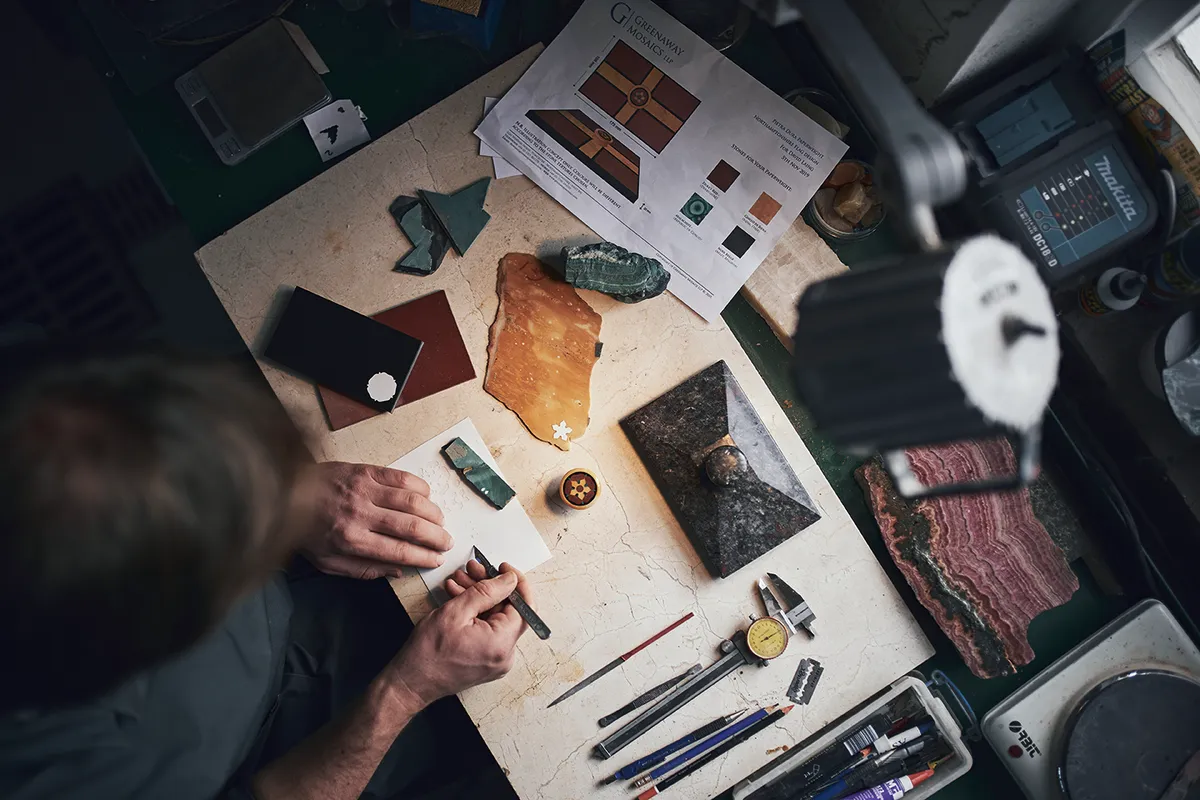
Patience is a virtue
Each intricate mosaic has a wealth of time poured into it. The stone blocks that have been collected over the years are thoughtfully selected for their colour and texture. Once the stones have been removed from the Tuscan soil, Thomas cracks into them himself. ‘It is a 50-50 chance of what you’re going to get – whether it is a good or horrible piece,’ says Thomas. ‘It is extremely exciting when you do discover the colour and texture within the material.’ Each defined piece is cut using a chestnut bow saw. ‘This saw is what they have used since the 16th century,’ says Thomas. It’s these traditional touches that make you marvel at his work, even more than you did before. Now comes the time to piece everything together. ‘It’s like painting by numbers – a very complex puzzle.’
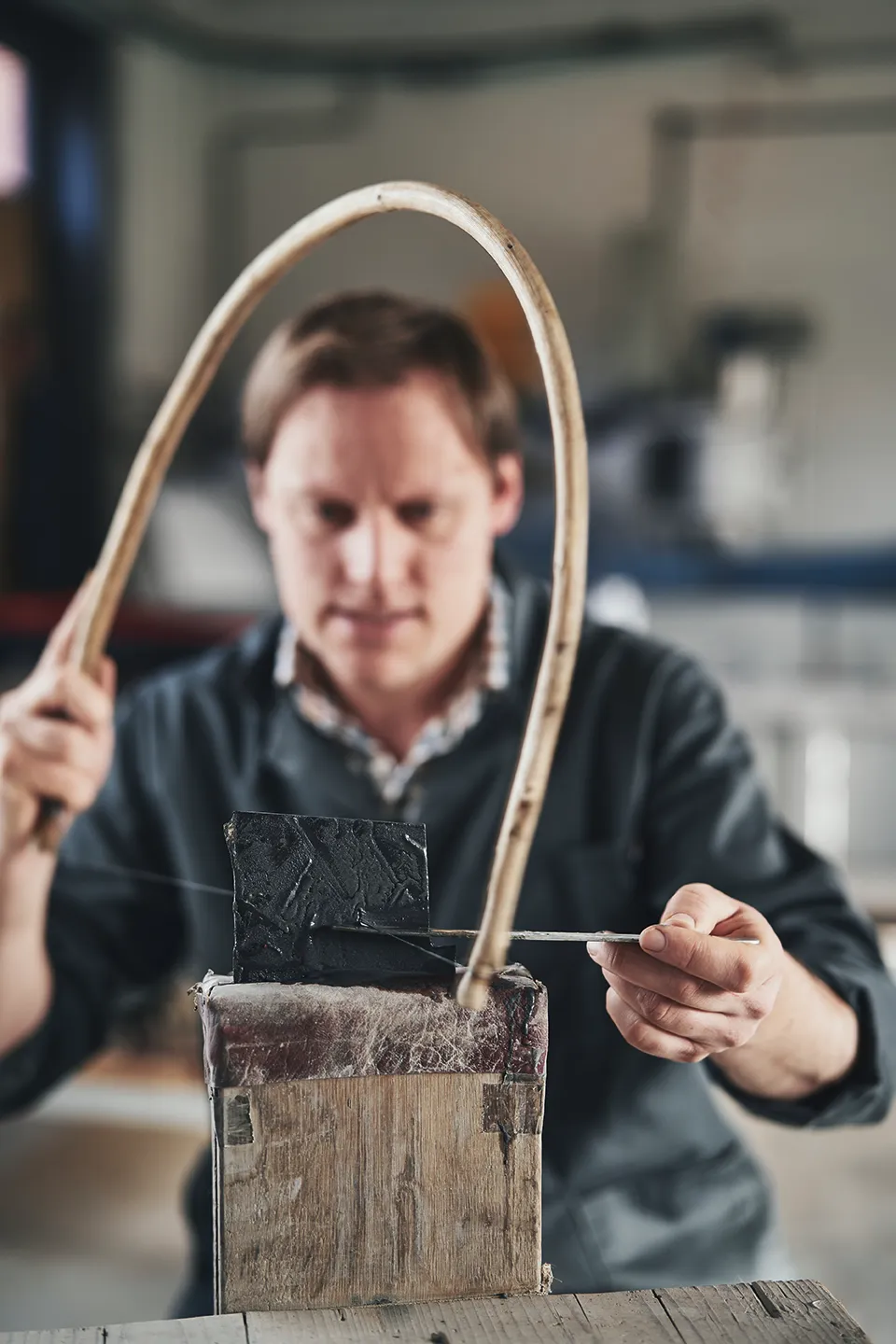
The products vary incredibly in regard to how long they take to complete. Factors include the detail of the design and the choice of stone or marble. It can take as little as two weeks for a panel or several months for a table. ‘The Koi carp was one of my favourite pieces that I have created, and I was sad to sell it – the design incorporated a very rare jasper that I have not been able to source again.’
This saw is what they have used since the 16th century – it’s a very traditional method.
Alongside original artworks, Thomas takes great care and pride in his restoration work. ‘The most important thingis doing the background research,’ he says. ‘From my training in Florence, it is really important to use the traditional methods that they would have used at the time.’ Thomas explains that, when people look at his work, he wants them to appreciate it for what it is, and the beauty of the stones, as opposed to the effort that has gone into preserving the exquisite pieces.

A calming influence
As with any creative process, external inspirations are key, and there have been numerous artists throughout the years who have been an influence on Thomas’s complex work. Many of these artisans he happened to come across during his time in Italy. However, there is one contemporary designer who stands out and really sparked an interest – Richard Blow. ‘He created very modern designs that revitalised pietra dura in the 20th century, when old Victorian mosaic designs were becomingincreasingly unfashionable,’ Thomas explains.
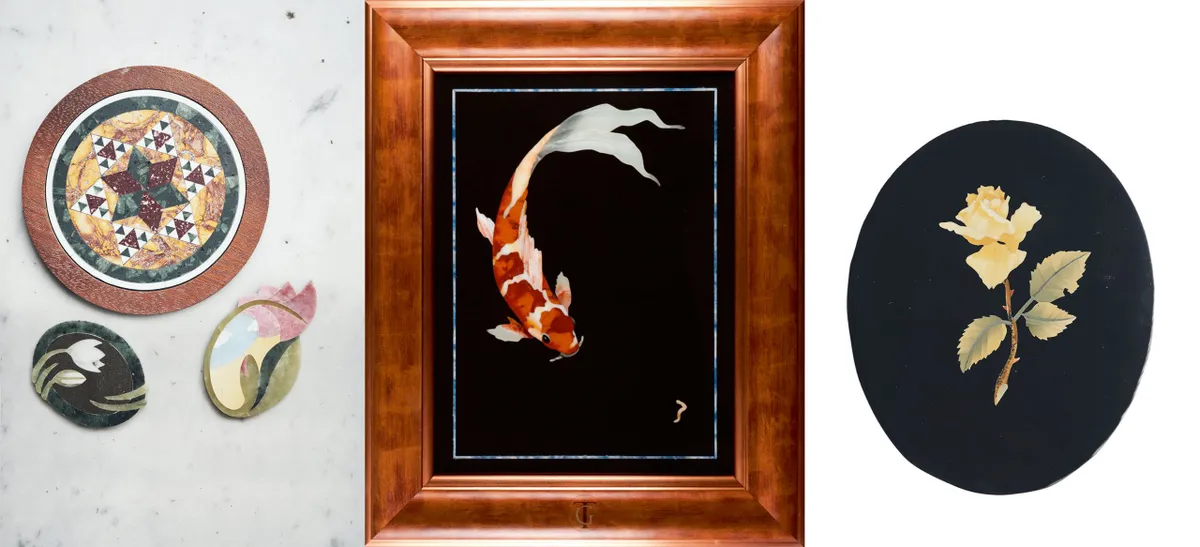
As well as continuing to focus on his original works and meticulous restorations, Thomas likes to look ahead and to consider how he can inspire the future wave of craftspeople. ‘I would love to set up courses to teach the next generation of mosaicists; to pass on what I have gained over the years. It’s incredibly rewarding to work with other people.’
For now, though, he wishes to continue to produce beautiful pieces – the latest project being a Tudor rose he has crafted for the lobby of the Palace of Westminster.
Antiques of the future
Fellow Art Workers’ Guild member Andrew Tanser on why Thomas’s works have enduring appeal
Thomas is a member of organisations such as The Art Workers’ Guild and he has expressed how supportive they are of his work. ‘Without a doubt, Thomas is a unique modern master – using traditional methods to the very highest of standards,’ says Andrew. ‘When I first saw his work, it took me back to initially seeing the Taj Mahal. The design flair, balance and rhythm in the choice of colour and material; the joy and life in the work; and the exquisite execution, set Thomas’s pieces apart. I have never come across anyone else like him and this quality and craftsmanship will always be sought after.’
You can see more of Thomas’sbreathtaking designs at greenawaymosaics.com